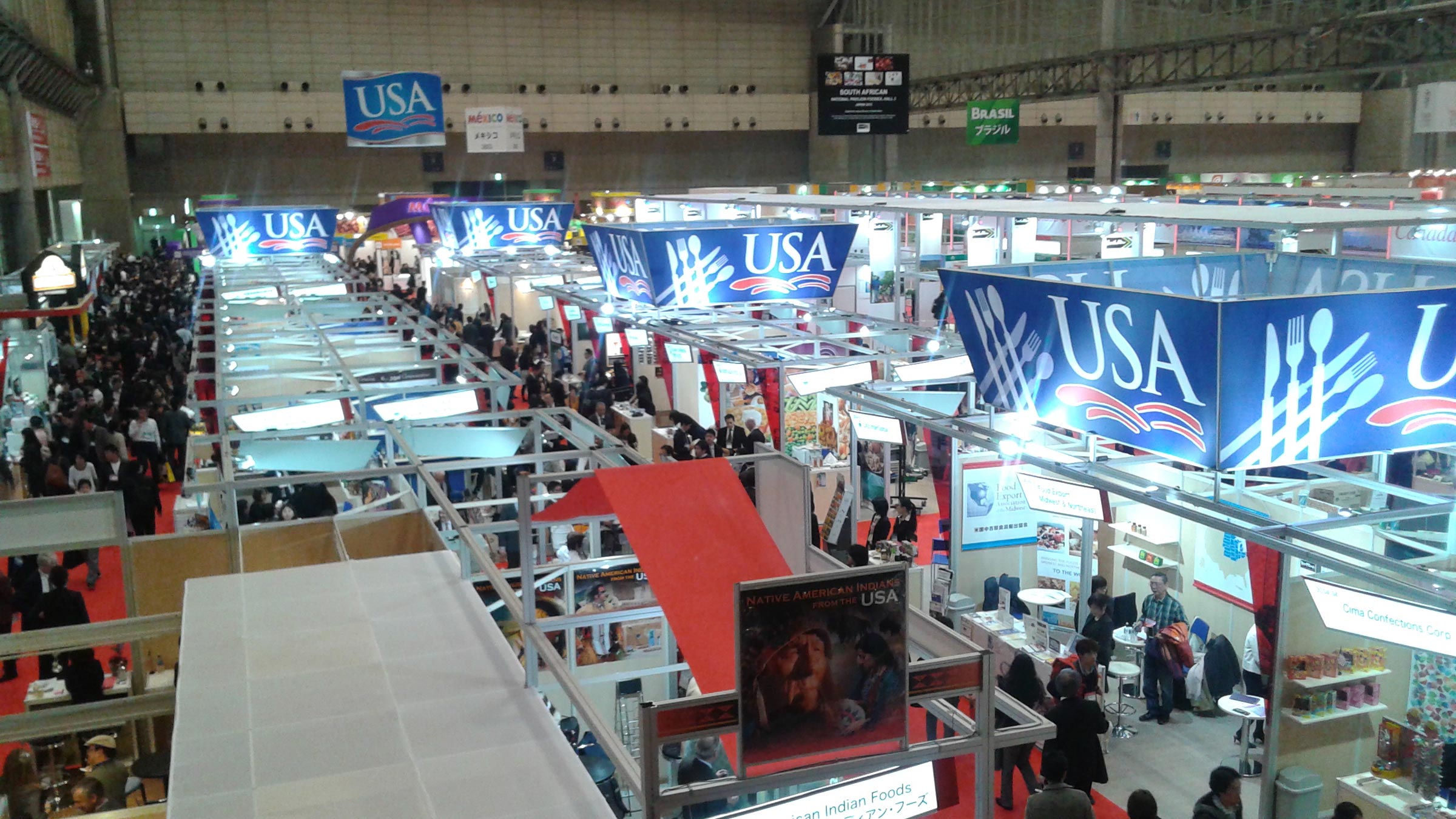
COUNTRY PROFILE
Discover more about the Guatemala market including overviews about the retail, food service, and food processing sectors. Events, resources, and more are linked throughout the profile.

1st
largest importer of U.S processed foods in Central America

$549.7 Million
total of U.S. processed foods imports in 2022

2.9% Increase
Expected growth in Guatemala’s economy
Euromonitor reports that the economy in Guatemala expanded in real terms in 2022, driven by increasing public and private consumption, capital investment, and external demand. However, global economic slowdown, elevated inflationary pressures, and tightening financial conditions are set to undermine business and consumer confidence globally, raise uncertainty, and weigh on the country’s economic outlook.
Guatemala is the most populous country in Central America with a GDP per capita roughly half the average for Latin America and the Caribbean. The agricultural sector accounts for 13.5% of GDP and 31% of the labor force. Key agricultural exports include sugar, coffee, bananas, and vegetables. Guatemala is the top remittance recipient in Central America as a result of Guatemala’s large expatriate community in the U.S. These inflows are a primary source of foreign income, equivalent to two-thirds of the country’s exports and about a tenth of its GDP.
Guatemala is experiencing a population boom that began in the 1980s and will continue for at least another decade. Total population in 2023 was 17.9 million, (CIA World Factbook Est.), an increase of 6.2 million since 2000. The median age is slowly rising but was just 24.4 years in 2023. Only 5.2%, or about 1 million men and women of the population, is over 65.
USDA’s Office of Agricultural Affairs, OAA, in Guatemala City, hereinafter referred to as FAS Post Guatemala City, reports that the U.S. and the rest of Central American countries are the main trade partners with Guatemala. Besides CAFTA-DR, Guatemala has free trade agreements (FTAs) with Central America (including Panama), Colombia, Mexico, Dominican Republic, Taiwan, Chile, and the European Union (EU.)
The customs union between Guatemala and Honduras started in June 2017, and as of December 7, 2018, El Salvador is part of the customs union. It is called “El Poy” (the name of the border crossing) and is the integrated border of the three countries. Authorities believe that this customs union will turn the Central America northern triangle into the eighth strongest economy in Latin America. With this union, most import tariffs will be harmonized to facilitate cross-border trade and eliminate opportunities for triangulation of imports.
Guatemala is the largest U.S. export market for processed foods in Central America. In 2022 Guatemala imported a record high US$549.7 million in U.S. processed foods, growth of 11%. In 2023, U.S. exports of processed foods declined 9% to US$501.4 million. This equates to US$48.3 million, which adds to the U.S. trade deficit in food and agricultural products.
Top processed food exports from the U.S. in 2023 included:

$6.7 Billion
estimated total of retail sales of packaged food products in 2023

49%
of retail value share belongs to Walmart Mexico and Central America

$9.7 Billion
estimated growth in sales of packaged food products by 2028
Euromonitor has estimated that the 2023 retail sales of packaged food products in Guatemala reached US$6.7 billion. Guatemala remains the largest packaged food market in Central America. This also represents an increase of nearly US$1.6 billion or 30.7% from 2019. Euromonitor also forecasts the packaged food market to grow to US$9.7 billion by 2028, an increase of over US$2.4 billion and 33.3% from 2024.
High growth categories in the forecast include:
FAS Post Guatemala City reports that in 2022, supermarkets, hypermarkets, and independent food stores continued adding locations, but retail volume sales fell versus 2021. This decrease was mainly due to the rising cost of raw materials, shipping costs, labor, and energy impacting consumer good prices. The retail sector in Guatemala is dominated by three supermarket chains. These supermarkets mainly target middle- and high-income consumers. However, there are still many opportunities in the retail sector. Only 30% of food sales are in supermarkets. Other consumers still rely on open-air markets and corner stores.
In 2022, Walmart Mexico and Central America continued to be the leading supermarket chain with a retail value share of 49%; followed by Unisuper (La Torre/Econosuper), with 21.5% of retail value share. These supermarkets target middle- and high-income consumers and low to mid-low-income consumers. There are still many opportunities in the retail sector since only 30% of total food sales are made by supermarkets. This opportunity is also an advantage for the informal retailers who are mostly concentrated in the rural areas of the country and mainly attract low-income and mid-income consumers.
Walmart Mexico and Central America: The largest supermarket chain and the leading supermarket chain in Guatemala. The company has 263 stores, divided as follows: Supertiendas Paiz (27), Walmart (10), Despensa Familiar (181), and Maxi Despensa
(45). Walmart directly imports around 85% of its food products, including produce, cereals, processed foods, and beverages. Walmart Guatemala and Walmart Costa Rica make most of the purchasing decisions for the rest of the Central American stores and are interested in expanding the lines of imported goods to supply their high-end hyper and Paiz stores. The company is also introducing its private label called Great Value, which competes with imported products and is regarded as high quality and affordable.
Unisuper: The second largest supermarket in Guatemala and the number one domestic supermarket chain, with 174 stores under the names of La Torre (102); Torre Express (65), and Econosuper (seven). La Torre sells local and imported products, and customers are middle high and high-end consumers. La Torre Express stores are smaller and mainly located in Guatemala City. Unisuper introduced this new convenience store concept “express” at the end of 2017. The strategy consists of opening small convenience stores of around 70 square meters in Guatemala City and then expanding in the coming years to other large cities in the country. These stores carry a small inventory of products and compete directly with corner stores, but they can sell imported products and refrigerated and frozen goods.
Super Del Barrio: Started business in 2015 and presently has 154 stores under three different concepts: Super Del Barrio (100 units), which offers daily discounts for food items and competes with larger stores, attracting customers that live in nearby residential areas and target lower income consumers. The name of the corporate office is Grupo de Tiendas Asociadas (GTA). In addition, the company has Summa stores, which are larger stores that are like hypermarket stores; and Super Fresh stores, which cater to middle- and high-end consumers and sell imported and local products.
PriceSmart: U.S. warehouse company headquartered in San Diego, California, that operates membership club stores in Latin America and the Caribbean. The company sells food and consumer goods, and members pay between US$20 and US$35 to shop at their stores. The supermarket has four stores in Guatemala City, Mixco, and Fraijanes. Presently, it is the only membership retail store in Guatemala.
FAS Post Guatemala City reports that considering imported food products fall into the premium price when reaching supermarket shelves, the general characteristics exporters should consider are well-known brands, high-end attributes, one-year shelf life or more, attractive packaging, and products that confer status and level of innovation. Products that combine these characteristics are more likely to enter the market successfully. U.S. products such as grains, beef, pork, chicken, oils, fruits, and vegetables, as well as other food items, are highly demanded by consumers, hotels, restaurants, and the food processing industry.

18,000
establishments registered under the food and beverage preparation category

10.2%
tourism accounted for 10.2% of GDP

177% Increase
in tourism since 2021
FAS Post Guatemala City reports that Guatemala is recovering from the effects of the pandemic and in 2022 tourism reached 1.8 million visitors representing, an increase of 177% from 2021. The Hotel, Restaurant and Institutional (HRI) sector represents 4.5% of the country’s GDP. Guatemalan consumers have returned to eating out looking for restaurants that can offer innovation in the gastronomic industry not only focusing on food preparation, but also on presentation, fusion cuisine, and the technology applied to food production processes.
Tourism in Guatemala represents 10.2% of total GDP, and during 2022, the Guatemalan Tourism Institute (INGUAT) reported that 1,844,739 tourists traveled to Guatemala, representing an increase of 177% when compared to the number of tourists who traveled to Guatemala in 2021. Almost 39% of tourists came from El Salvador and the rest came from the U.S., Europe, and other Central American countries.
The hotel sector in Guatemala consists of international chains, boutique hotels, and hostels. Most of the hotels in Guatemala City have at least one restaurant open to the public and many have a bistro or coffee shop in addition to their restaurant. International travelers that stay in Guatemala City for business purposes usually stay from two to four nights. Many of the international hotel chains include breakfast in their lodging rates and, therefore, travelers eat that meal at the hotel and have lunch and dinner at nearby restaurants.
In 2023, the restaurant sector in Guatemala increased the number of units around the country; this also applies for the fast-food sector. There are an estimated 18,000 restaurants nationwide, generating around 400,000 direct jobs. This sector represents 15% of the tax collection and 4.5% of the GDP. After the decline recorded during 2020 because of the COVID-19 restrictions, the restaurant sector began its reactivation in 2021 and 2022, seeking to reach pre-pandemic growth levels in 2023.
Guatemalan Franchise Association (GFA) reports that franchised restaurant businesses there are some segments that are growing more rapidly, and one of the fastest growing segments of the industry is the fried chicken business. According to the GFA, it is a preferred food among Guatemalan consumers. Guatemala has approximately 450 franchises from which almost 50% are food-related businesses. These are local and international franchises such as Starbucks, McDonald’s, Taco Bell, Burger King, Pizza Hut, Domino’s, Little Caesars, etc. These businesses have expanded their business operations to the interior of the country where new shopping malls are opening in the major cities.
The United States is also an important supplier of chicken, soybean oil, dairy products, wheat, and red meats. Major competitors include Mexico, an important beer and distilled spirits’ supplier; Costa Rica, which supplies soups and other food preparations, condiments, and sauces; and El Salvador with bakery goods, cereals, and pastas.
FAS Post Guatemala City reports that products present in the Hotel Restaurant and Institutional (HRI) sector that offer good potential from the U.S. include beef and beef products, pork and pork products, poultry meat and products (ex. eggs), dairy products, processed fruits and vegetables, craft beers, snack foods, condiments and sauces, and frozen potatoes.

46%
of the total manufacturing industry is from the food and beverage processing

18%
growth of the food and beverage processing industry in 2022

6.5%
food and beverage processing industry represents 6.5% of the GDP
FAS Post Guatemala City reports that the Guatemalan food and beverage processing industry, of approximately 2,200 companies, represents 46% of the total manufacturing industry in Guatemala. U.S. agricultural exports to Guatemala play an important role in this industry for raw materials. This sector grew 18% in 2022, representing 6.5% of the GDP, and 17.7% of total exports.
Approximately 500 companies are small companies with less than 20 employees. These companies supply the domestic market and mainly export to other Central American countries and the United States. Sales of processed foods are increasing because of internal demand and the export of these products to the world. Supermarket growth is also increasing consumer demand throughout the country. Growth in the tourism sector plays an important role in the consumers’ demand for quality food and beverage products in the market.
Guatemala is one of the top food processing countries in Central America; meats and bakery and dairy products continue to lead the domestic food processing sector. U.S. suppliers have good opportunities to export bulk, intermediate, and consumer-oriented products that can be used as ingredients for further processing. After two years of COVID-19, Guatemalans have changed some of their consumer habits and preferences. They are cooking more at home, increasingly use social media platforms to purchase products, and seek healthier food and beverage options.
Guatemala is a major importer of raw materials and ingredients, which are used by local companies for further processing for both domestic consumption and exports. In 2021, the Guatemalan Chamber of Food and Beverages (CGAB) reported that the processed food and beverage exports from Guatemala to the world increased 28% versus 2020, totaling US$1.1 billion, becoming the country’s main exporting sector, followed by the textile and clothing sector with a growth of 26% over 2020.
Main destinations of exports were to Central America with 43%; Mexico with 10% and the U.S. with 8%. Palm oil, cookies and other bakery products, prepared sauces, and nonalcoholic beverages are among the largest exports of processed food goods. The food and beverage processing industry in Guatemala is the second largest exporting sector and represents 6.4% of the country’s total GDP.
The main food processors are: Alimentos S.A./Alimentos Maravilla (cereals refried beans; snacks; nonalcoholic beverages; soy based foods; seeds); Bimbo (bakery products); Cargill/Perry (poultry; processed meats; pet food); CMI Corporation (cookies; crackers; cereals; pasta; animal feed; processed meats; pet food); Fresh Del Monte (canned fruits and vegetables; refried beans; ketchups and tomato paste; dried fruits; fruit nectars and juices); Nestlé/Malher (soups; dairy; chicken and beef dried broths; confectionary, etc.); and PepsiCo/Frito Lay (snacks, beverages.)
FAS Post Guatemala City reports that the areas with the most growth potential for the food processing industry are: processed meats: mechanically deboned meat (MDM); boneless picnic; pork bellies, trimmings and offal; animal fats; flours (fillers); beverages: fruit concentrates and nectars; drink bases and syrups; soy flakes and soy powder; artificial fruit flavors; baking: pancake mixes; pre-mixes; bulk cake flours; snacks: dehydrated potato flakes and powder; tree nuts; fruit fillings; whey powder, protein concentrates; corn; soups and broths: fresh potatoes, dehydrated potato flakes and powder; and condiments.
